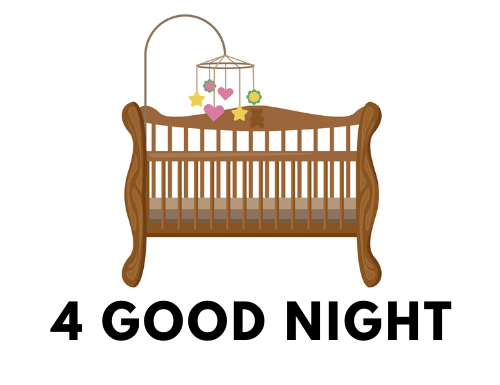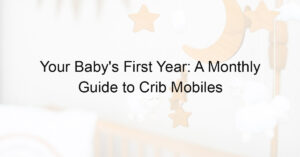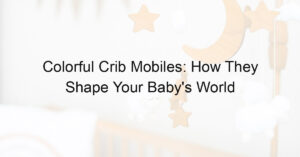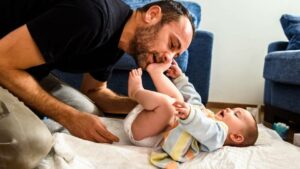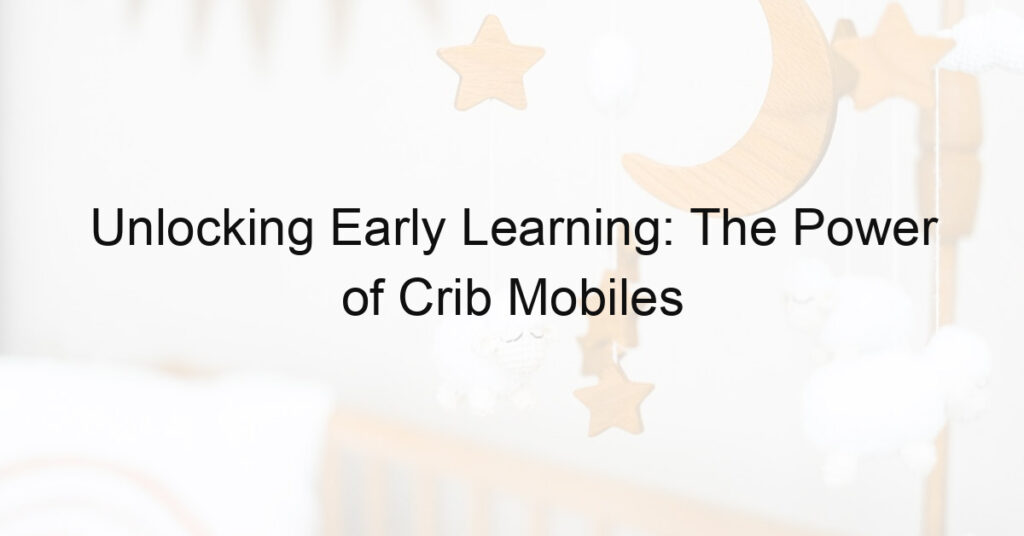
Introduction to Infant Sleep Safety
As a new parent, ensuring your baby’s safety during sleep is of utmost importance. This article will guide you through the essentials of infant sleep safety, helping you understand its significance and debunking common misconceptions about baby sleep.
- Understanding the Importance of Infant Sleep Safety
Infant sleep safety is a critical aspect of childcare that every parent should be aware of. It’s not just about making sure your baby gets enough sleep; it’s also about ensuring the sleep environment is safe and conducive to healthy sleep habits. This involves the correct positioning of your baby during sleep, choosing the right crib, and understanding the risks of Sudden Infant Death Syndrome (SIDS).
According to the American Academy of Pediatrics, approximately 3,500 infants die annually in the United States from sleep-related deaths. This alarming statistic underscores the importance of adhering to safe sleep guidelines. As parents, it’s our responsibility to create a safe sleep environment for our babies, reducing the risk of sleep-related accidents or deaths.
- Common Misconceptions about Baby Sleep
There are many misconceptions about baby sleep that can potentially put your child at risk. One common myth is that babies should sleep on their stomachs. However, research has shown that this increases the risk of SIDS. The safest position for a baby to sleep is on their back.
Another common misconception is that it’s okay to share a bed with your baby. While it may seem comforting, bed-sharing increases the risk of SIDS and other sleep-related infant deaths. Babies should have their own sleep area, such as a crib or bassinet, in the parents’ room for at least the first six months.
Understanding these misconceptions is crucial in ensuring your baby’s safety during sleep. Remember, when it comes to your baby’s sleep, safety should always be the top priority.
Safe Sleep Guidelines for Infants
Ensuring your baby’s safety during sleep is crucial. This section will guide you through the essential steps to create a safe sleep environment, understand the right sleep position for your baby, and recognize the importance of a firm sleep surface.
- Creating a Safe Sleep Environment
- Understanding the Right Sleep Position for Your Baby
- Importance of a Firm Sleep Surface
Creating a safe sleep environment for your baby is the first step towards ensuring their safety. This involves removing any potential hazards from the crib or sleep area. Items such as pillows, blankets, stuffed animals, and crib bumpers can pose a risk of suffocation and should be kept away from your baby’s sleep area. The temperature of the room should be kept comfortable, not too hot or too cold. A room temperature of around 68-72°F (20-22°C) is considered safe and comfortable for your baby.
The safest position for your baby to sleep is on their back. This position reduces the risk of Sudden Infant Death Syndrome (SIDS), a condition that can cause unexplained death, usually during sleep. According to the American Academy of Pediatrics, babies who sleep on their back are much less likely to die of SIDS than babies who sleep on their stomach or side. Always place your baby on their back for every sleep, including naps and at night.
A firm sleep surface is essential for your baby’s safety. Soft surfaces can conform to the shape of your baby’s face and head, increasing the risk of suffocation. Your baby’s mattress should be firm and fit snugly in the crib, with no gaps between the mattress and crib sides. A firm surface maintains its shape and will not indent or conform to the shape of your baby’s head when your baby is lying on it. Always use a mattress specifically designed for infants, and ensure it meets safety standards.
In conclusion, ensuring a safe sleep environment, understanding the right sleep position, and recognizing the importance of a firm sleep surface are key to your baby’s safety during sleep. Always remember, safety first!
Must-Read for New Moms: Safe Sleep for Babies
As a new mom, ensuring your baby’s safety during sleep is paramount. This section will guide you through the basics of infant sleep practices. You’ll learn how to establish a sleep routine and recognize your baby’s sleep cues.
Infant Sleep Practices
Understanding infant sleep practices can make a significant difference in your baby’s safety and overall well-being. Let’s explore two crucial aspects: establishing a sleep routine and recognizing sleep cues.
- Establishing a Sleep Routine
- Recognizing Sleep Cues
Establishing a sleep routine for your baby can help them sleep better and longer. It involves setting a consistent bedtime and wake-up time. This routine should also include pre-sleep rituals like a warm bath, reading a story, or singing a lullaby. These activities signal to your baby that it’s time to sleep. Remember, consistency is key. It might take a few weeks for your baby to adapt to this routine, but the results are worth it.
Every baby gives signals when they’re ready to sleep. These are known as sleep cues. Yawning, rubbing eyes, looking away, and becoming fussy are common sleep cues. Recognizing these cues can help you put your baby to bed before they become overtired, making it easier for them to fall asleep. Pay close attention to your baby’s behavior to identify their unique sleep cues.
Understanding and implementing these infant sleep practices will go a long way in ensuring your baby’s safety and quality of sleep. Remember, every baby is different, so what works for one might not work for another. It’s all about observing your baby and finding what works best for them.
Baby Sleep Safety Tips
Ensuring your baby’s safety while they sleep is of utmost importance. Here are two crucial tips that every new mom should know:
- Using Pacifiers Safely
- Keeping the Crib Free of Toys and Blankets
Pacifiers can be a great tool for soothing your baby and helping them fall asleep. However, it’s essential to use them safely. Always check the pacifier for any signs of wear and tear before giving it to your baby. A broken or worn-out pacifier can pose a choking hazard. Also, never tie a pacifier around your baby’s neck or crib. It can lead to strangulation. Instead, consider using a pacifier clip that is specifically designed for this purpose.
While it might seem like a good idea to fill your baby’s crib with soft toys and blankets, it can actually be dangerous. These items can increase the risk of suffocation and Sudden Infant Death Syndrome (SIDS). According to the American Academy of Pediatrics, the safest sleep environment for your baby is a bare crib with a firm mattress and a fitted sheet. Avoid placing any pillows, blankets, or stuffed animals in the crib with your baby.
Remember, your baby’s safety is paramount. By following these tips, you can create a safe sleep environment for your baby and have peace of mind.
Newborn Sleep Safety: Case Studies
Understanding newborn sleep safety is essential for all new parents. To help illustrate the importance of following safe sleep guidelines, let’s take a look at two case studies.
- Case Study 1: Successful Implementation of Sleep Safety Guidelines
- Case Study 2: Learning from Sleep Safety Mistakes
Meet Sarah and John, first-time parents to baby Emily. They were diligent in learning about newborn sleep safety. They made sure Emily slept on her back in a crib with a firm mattress and no loose bedding or toys. They also kept the room temperature comfortable, not too hot or cold. As a result, Emily had a safe and sound sleep environment, and Sarah and John could rest easy knowing they were doing their best to keep Emily safe.
On the other hand, we have Lisa and Mark, parents to baby Jake. They were not aware of the importance of sleep safety guidelines. They often let Jake sleep on his stomach and in their bed. One night, Jake had difficulty breathing due to the soft bedding. Thankfully, Lisa and Mark noticed in time and took the necessary steps. This incident was a wake-up call for them. They immediately educated themselves about sleep safety guidelines and made the necessary changes. Their story serves as a reminder of the importance of following sleep safety guidelines.
These case studies highlight the significance of adhering to sleep safety guidelines. It’s not just about following rules; it’s about ensuring the safety and well-being of your precious little one. Remember, every baby is unique, and what works for one might not work for another. Therefore, it’s crucial to stay informed and vigilant about your baby’s sleep safety.
Sleep Safety for New Mothers
As a new mother, your sleep safety is just as important as your newborn’s. In this section, we will focus on managing sleep deprivation, a common challenge for new moms.
Managing Sleep Deprivation
Sleep deprivation can be a significant issue for new mothers. It’s not just about feeling tired; it can have serious effects on your health and well-being. Let’s explore some tips for getting enough sleep and understand the impact of sleep deprivation.
- Tips for new moms to get enough sleep
- Establish a routine: Try to go to bed and wake up at the same time every day. This can help regulate your body’s internal clock and improve your sleep quality.
- Take naps: When your baby sleeps, take a nap too. Even a short nap can help reduce tiredness.
- Ask for help: Don’t hesitate to ask for help from your partner, family, or friends. They can take care of the baby while you catch up on some sleep.
- Understanding the impact of sleep deprivation
- Physical health: Lack of sleep can lead to a weakened immune system, making you more susceptible to illnesses.
- Mental health: Sleep deprivation can lead to mood swings, anxiety, and even depression.
- Cognitive function: Lack of sleep can affect your ability to think clearly, make decisions, and concentrate.
Getting enough sleep as a new mom can seem impossible, but there are strategies you can use to help improve your sleep quality and quantity. Here are a few:
Sleep deprivation is more than just feeling tired. It can have serious effects on your health and well-being. Here are some of the impacts:
Remember, taking care of your sleep is a crucial part of taking care of your baby. By managing your sleep deprivation, you can ensure that both you and your baby are healthy and safe.
Self-Care for New Moms
As a new mom, it’s easy to forget about your own needs when you’re focused on your baby’s. However, self-care is crucial not only for your well-being but also for your baby’s sleep safety. Let’s delve into why self-care is important and how you can incorporate it into your daily routine.
- Importance of self-care in ensuring baby’s sleep safety
- Practical self-care tips for new moms
- Get enough sleep: Try to sleep when your baby sleeps. Even a short nap can make a big difference in your energy levels and mood.
- Eat healthy: Your body needs nutrients to recover from childbirth and to produce breast milk if you’re breastfeeding. Try to eat a balanced diet with plenty of fruits, vegetables, lean proteins, and whole grains.
- Stay hydrated: Drink plenty of water, especially if you’re breastfeeding. This can help prevent dehydration, which can lead to fatigue and other health problems.
- Exercise regularly: Even a short walk around the block can boost your mood and energy levels. Always consult with your doctor before starting any new exercise regimen after childbirth.
- Take time for yourself: Even a few minutes a day can make a big difference. Read a book, take a bath, meditate, or do anything else that helps you relax and recharge.
When you take care of yourself, you’re better equipped to take care of your baby. This includes ensuring your baby’s sleep safety. A well-rested, calm, and healthy mom is more likely to be attentive and alert to her baby’s needs, including recognizing signs of sleep distress or potential hazards in the baby’s sleep environment.
According to a study by the American Academy of Pediatrics, mothers who are stressed or sleep-deprived may not follow safe sleep practices consistently. This can put the baby at risk. So, by prioritizing your self-care, you’re also prioritizing your baby’s sleep safety.
Self-care may seem like a luxury when you’re a new mom, but it’s a necessity. Here are some practical tips to help you take care of yourself:
Remember, taking care of yourself is not selfish—it’s essential. By prioritizing your self-care, you’re not only helping yourself but also creating a safer sleep environment for your baby.
Infant Sleep Safety for New Moms: Key Takeaways
As we conclude our discussion on infant sleep safety, it’s important to summarize the key points for easy reference. These takeaways will serve as a quick guide for new moms to ensure their baby’s safety during sleep.
-
Summary of Safe Sleep Guidelines
Firstly, always place your baby on their back to sleep, in a crib or bassinet with a firm mattress. The sleep area should be free of pillows, blankets, and toys to prevent suffocation. The crib should be in the same room where you sleep, but not the same bed. Avoid overheating by dressing your baby in light sleep clothing and maintaining a comfortable room temperature.
-
Importance of Consistent Sleep Practices
Consistency is key in establishing good sleep habits. This includes setting a regular bedtime and wake-up time, and following a consistent bedtime routine. This routine could include activities like a warm bath, reading a book, or singing a lullaby. Consistent sleep practices not only promote better sleep quality but also contribute to your baby’s overall health and development.
-
Role of Self-Care in Managing Sleep Safety
Lastly, remember that your well-being is crucial in managing your baby’s sleep safety. Ensure you’re getting enough rest, eating a balanced diet, and taking time for self-care. A well-rested and healthy mom is better equipped to care for her baby. If you’re feeling overwhelmed, don’t hesitate to ask for help from family, friends, or a healthcare professional.
Remember, every baby is unique and what works for one may not work for another. It’s important to be patient and flexible as you navigate this new journey of motherhood. With these key takeaways in mind, you’re well on your way to ensuring safe and healthy sleep for your baby.
